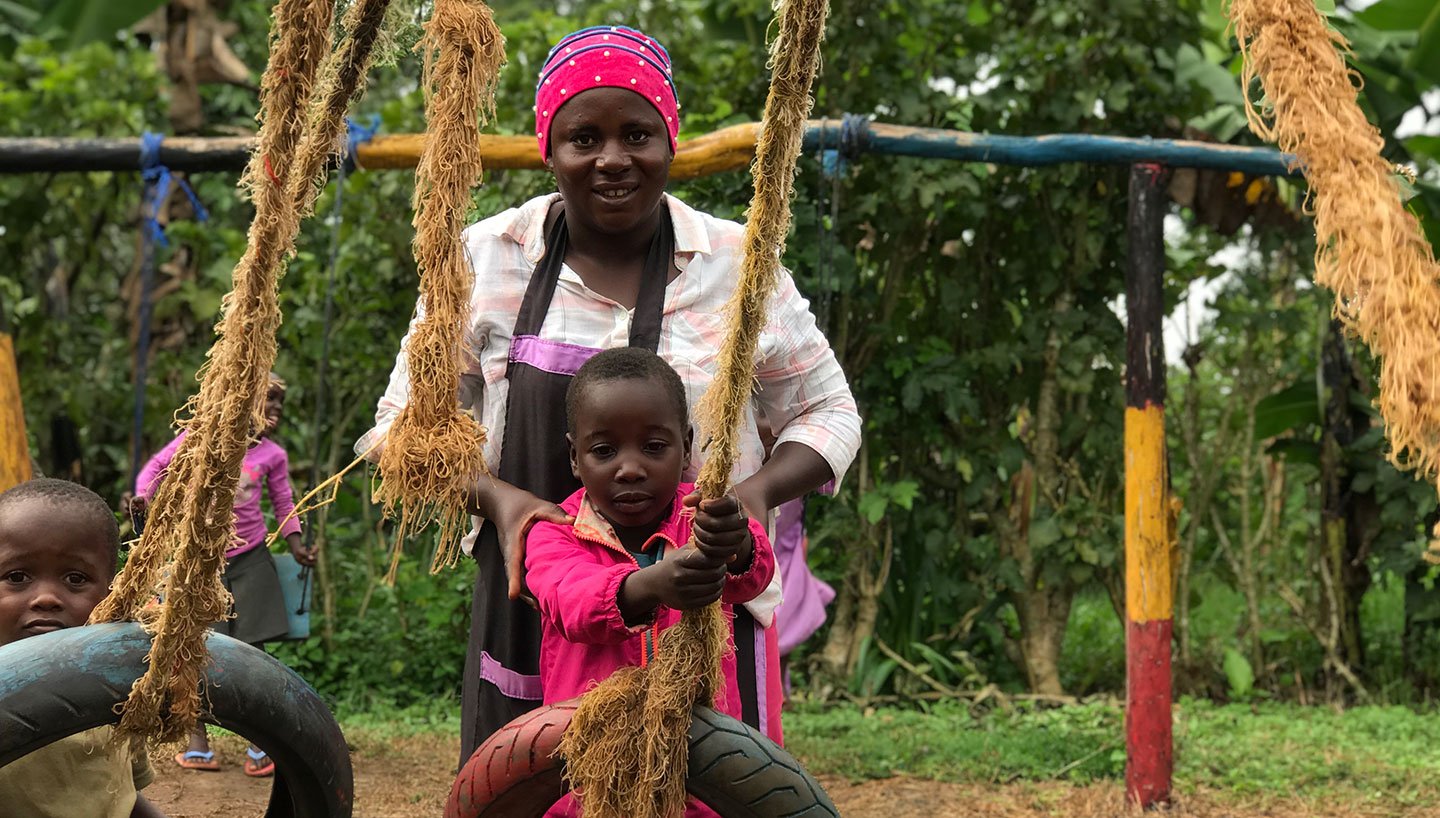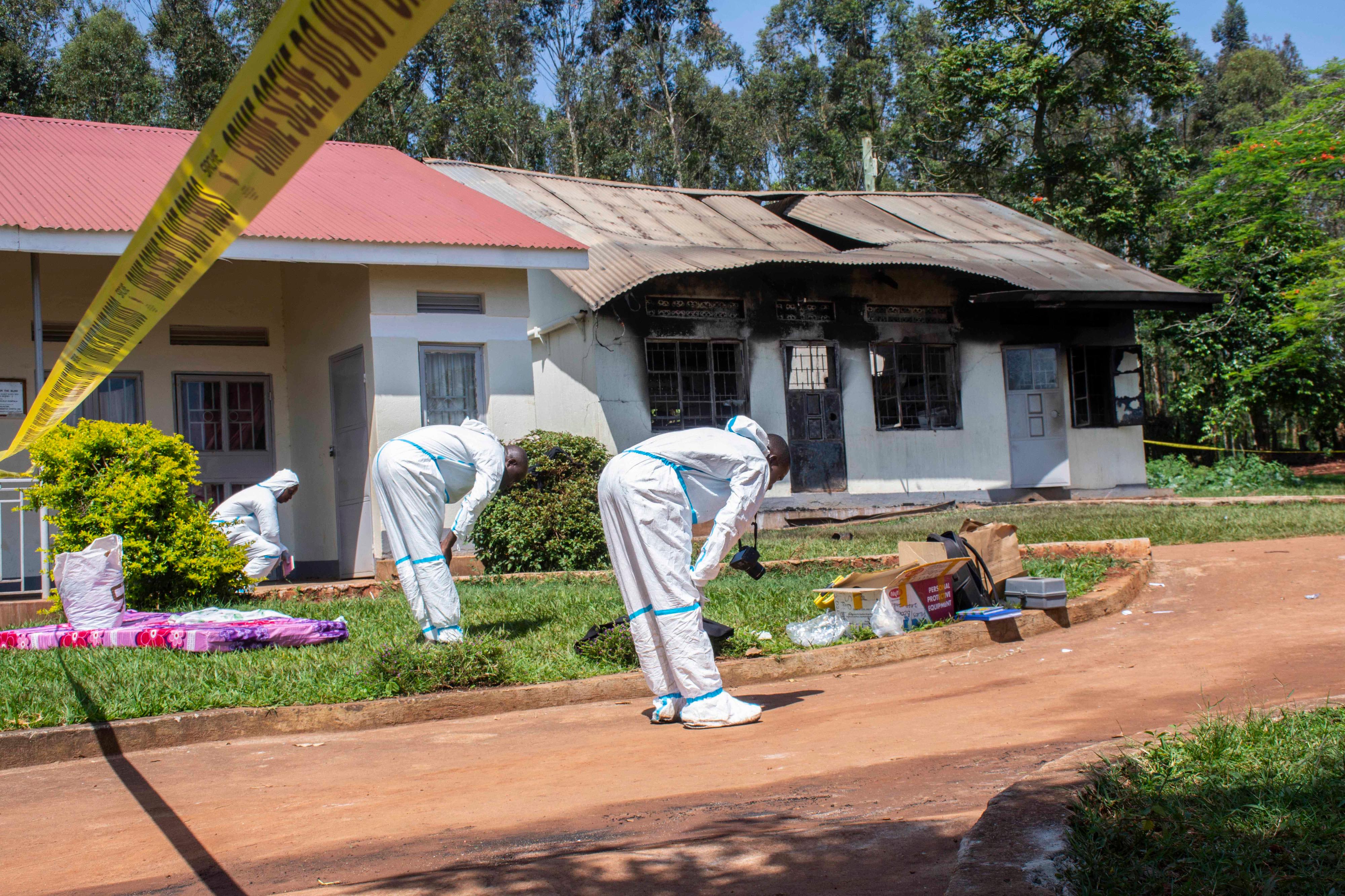Campaign to curb school fires taken to learners

Support. The assistant commissioner in charge of private schools and institutes of higher learning, George Mutekanga (Left in tie) and AIGP Joseph Mugisa, police director for Fire and Rescue Services witness the signing of the ‘Cool Kids Stop Fires’ campaign by pupils of Greenhill Academy. Below. Greenhill schools rector Lydia Effata receives the report from AIGP Mugisa. PHOTOS / FRANK BAGUMA
What you need to know:
- The initiative launched at Greenhill Academy is being implemented as a measure towards reducing the incidents of fire outbreaks in schools and resulting injuries, fatalities and loss of property. Most fires in schools are caused by students in reaction to disciplinary action caused by school administration or as a result of quarrels among students, writes Caesar Abangirah.
“Schools are meant to be safe learning spaces for our school children,” Dr. Joyce Moriku Kaducu, State Minister for Primary Education, recently said ahead of the launch of a fire safety education campaign for schools across the country.
“It is truly disheartening to see that the high rates of school fires that go unchecked are due to negligence and the lack of preventative measures such as installation of recommended firefighting equipment.”
Dubbed Cool Kids Stop Fires, the campaign spearheaded by Vivo Energy will be implemented in partnership with the Uganda Police Directorate of Fire Prevention and Rescue Services and the Ministry of Education and Sports.
The initiative, launched at Greenhill Academy last month, is being implemented as a measure towards reducing the incidents of fire outbreaks in schools and resulting injuries, fatalities and loss of property.
At the launch of the campaign, it was revealed that most school fires are intentionally started by students to settle personal scores.
Furthermore, the ‘Security and Safety Guidelines to Educational Institutions of Learning’ report, signed by the Inspector General of Police Martin Okoth Ochola, revealed that between January 5, 2022 to June 27, 2022, a total of 40 fire outbreak incidents were recorded in 39 schools and institutions in Uganda.
“Unfortunately, seven learners lost their lives,” the June 28, 2022 report, released recently by AIGP Joseph Mugisa, police director for Fire and Rescue Services during a fire safety education campaign for schools in Uganda, reveals in part.
“Investigations have so far established that out of the 40 incidents, 17 were intentionally (deliberately) set; four were a result of negligence, four accidental, that is, electric fire circuits. The causes of the 15 fire incidents have not been established,” AIGP Mugisa, who represented Mr Ochola said.
Patterns
More investigations have also established that schools mostly affected are boarding and privately owned except for Teso College, Kabalega SSS, Lubiri SSS and Iganga SSS.
The fires have mostly occurred in dormitories when the students were outside, with the exception of New Crest of Kibedi Junior School and St. Mary’s Prepartix Girls SS in Entebbe.
They occurred mostly between 5am and 6am, 8am to noon and 8pm to 10pm, and happened during the first two terms of the year, mainly from May to August.
“These rampant school fires present risks to the lives of children, their property, properties of the affected schools and are a disruptive effect to our country’s economy. There is urgent need for mass sensitisation, firefighting training and enhancement of fire safety measures by schools through installation of smoke detectors and alarms,” AIGP Mugisa noted.
Causes
According to the Uganda Police 2021 Annual Crime Report, a total of 1,258 fire emergencies were handled in 2021 compared to 1,015 in 2020, marking a 23.9 per cent increase.

The assistant commissioner in charge of private schools and institutes of higher learning, George Mutekanga, who received the report on behalf of the Ministry of Education and Sports, said most fires are caused by students in reaction to disciplinary action caused by school administration or as a result of quarrels among students.
He quickly blamed some of the school staff for harbouring ill intentions.
“Some of these fires are started by students in one school copying what other students are doing in other schools,” he said.
“Sometimes, there is also failure by the school administration to implement basic requirements and minimum standards of the Education Ministry.”
Other accidental causes include the use of illegal electric equipment by students, reckless use of electrical equipment, careless handling of combustible-lighting or cooking materials.
But, just like the Police, Johan Grobbelaar, Vivo Energy Uganda managing director, says fires can be stopped through the campaign.
“We would like to use our extensive expertise and knowledge to support the nation in curbing school fires which have been on the rise, and which pose a significant threat to the lives of our children and school property,” said Mr Grobbelaar.
“Through this campaign, we will impart fire safety education to students and stakeholders of educational institutions and skill them in the prevention, detection, and management of school fires to avert the loss of life and property,” he said.
Government interventions to curb the rising fire outbreaks include the institution of a committee by the Ministry of Works and Transport to review educational, commercial and residential facilities and gauge compliance to set fire prevention standards.
The committee comprises representation from the Uganda Police, Ministry of Works, Ministry of Education and Sports, Ministry of Gender, Labour and Social Development the Ministry of Justice and Constitutional Affairs and private school owners,.
“This campaign has various components including school outreaches to enhance fire safety knowledge and preparedness, donation of fire detection equipment and mass sensitisation on fire safety,” Mr Grobbelaar explained.
The Police urges education institutions to ‘activate safety and security committees for staff and learners’ as well as ‘put in place fire and safety measures such as portable extinguishers.’
“The major role of the committees is to draw up and oversee implementation of safety and security policy for the respective institutions,” Mr Mugisa said.
He added that there should be controlled access to premises as well as ensuring security within the premises.
“There should be proper identification of all the people at the school by providing identification tags for teachers and uniforms for support staff.”
Another recommendation is for schools to ensure that institution structures conform to provisions of the existing legislation with respect to design, construction, maintenance and change of use.
“Provide separate accommodation for each sex and age group; three square to four square metres floor space per student,” the report states.
But that is not all
Learners should take the culture of safety from school back to their homes.
“When you see your brother tampering with a cooker and you tell him that it can lead to an accident, you will have done a good job promoting safety. Keep it up and spread it further to your colleagues. The more the safety conscious, the more we remain safe,” he said.
Dr Kaducu, says following the directive issued on fire safety management in schools, the ministry shall step up inspection of this aspect to ensure compliance in educational institutions.
“I encourage head teachers to prioritise the safety of the children entrusted in their care by implementing these preventative measures,” Dr Kaducu said.
According to the Uganda Police, urgent issues that need to be addressed include security enhancement at schools with dormitories guarded when students are off for holidays, installation of fire alarms and cameras by schools, fire sensitisation as well as drills and regular inspection of schools for compliance to safety standards.
Dos and Don’ts
Do not allow/permit rubbish or waste burning close to dormitories, stores, classrooms etc. all burning of waste products must be in a controlled incinerator done by specific designed workers.
Do not permit any flame/heat producing lighters into dormitories or classrooms

Greenhill Academy pupils enjoy a light moment with officers of the Police Fire brigade department after launching the Cool Kids.
Do not allow crude electrical but risky heat producing appliances and items such as springs popularly known as ‘suicide’ into the dormitories or any other premises.
Do not undertake metal hot electricity welding or cutting, repair works in any occupied dormitory or laboratory, store, or office with combustible materials therein, first remove combustible materials before the welding or electric cutting worlds are undertaken. These works must be supervised before, during and after must have a standby fire extinguisher before, during and after the works.




